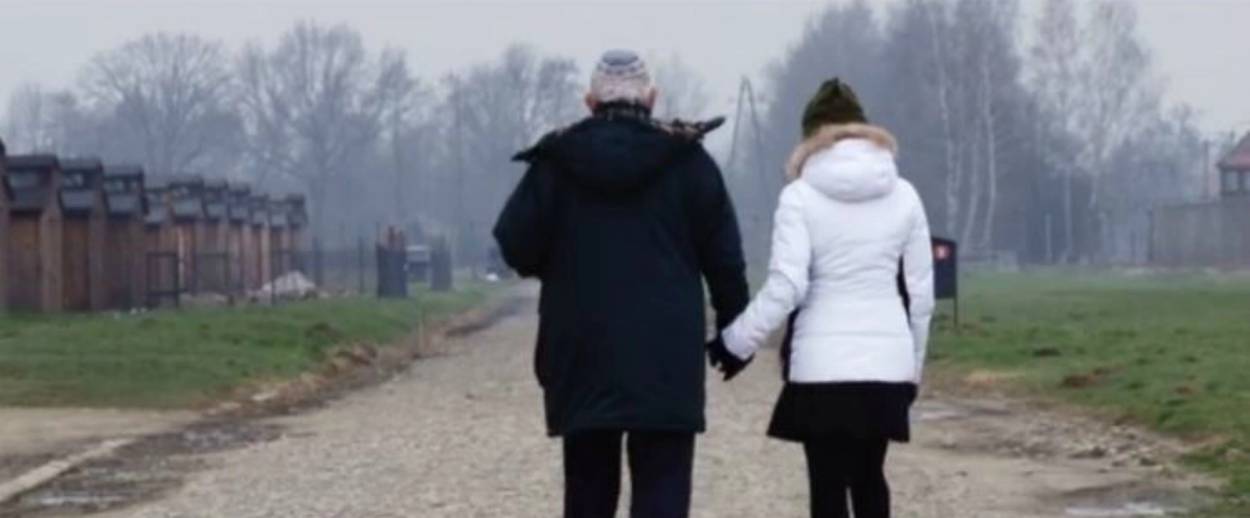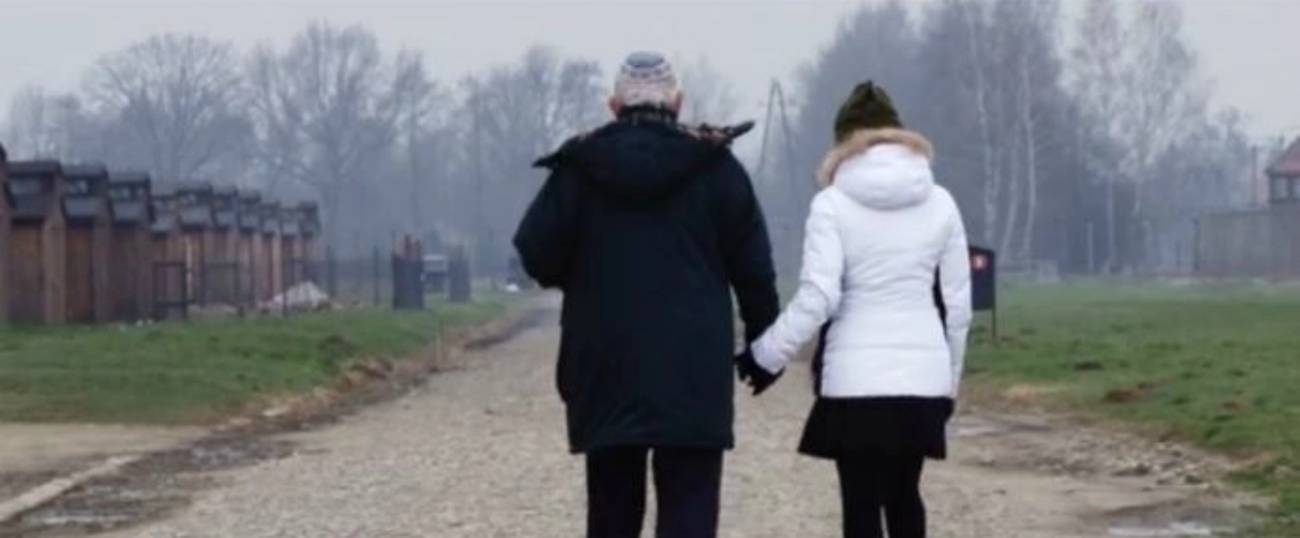Back to a Place of Hiding
In the documentary ‘The Barn,’ a Holocaust activist travels with her grandfather to Ukraine to visit the place where he took refuge from the Nazis




As a child, Rachel Kastner would lie in bed “like a sardine,” with her hands along her side, wondering what it would be like to have to remain hidden from the Nazis. She did this because she wanted to know more about the experience of her grandfather, Karl Shapiro, who was forced to hide in a cold, dark, damp bunker in Poland for two years during the Holocaust.
Shapiro was born in Kalusz, Poland, in 1934. When he was 9 years old, a customer of his father’s haberdashery offered to pay a farmer to hide Shapiro and his parents in his barn. (The barn was part of Poland at the time, but is now located in Ukraine because the borders have been redrawn.) The customer’s daughter, Paulina Plaksej, then 16, would periodically visit the barn to give the Shapiros, and 18 other persecuted Jews, food and medicine. Paulina and her parents are now recognized Righteous Gentiles at Yad Vashem.
After Shapiro left the barn at the end of World War II, he was put in a Displaced Persons camp before coming to America. His parents warned him not to associate with other Holocaust survivors in the U.S., and Shapiro did his best to blend in.
Two years ago, Kastner, a 20-year-old Holocaust educator, persuaded her grandfather to return to the barn in which he was hidden and to reunite with Paulina, who had coincidentally been meeting with groups from Kastner’s high school. She’s chronicled their trip in an upcoming documentary called The Barn.
Kastner, a student at Barnard College, said she feels a duty to make this film to her ancestors (three of her four grandparents are survivors) and her future children, who probably won’t have the opportunity to meet their great-grandfather. “There’s a lot of responsibility on third-generation survivors to make sure our grandparents’ legacies are never forgotten,” Kastner said. “But we can handle it.”
In a sense, The Barn provides millennials with an entry-point into the Holocaust because Kastner is cast as the protagonist who works through a number of emotions during the course of the film. But unlike Kastner, who said she grew up in a “Holocaust home” where the genocide was discussed all the time, Shapiro, like his parents before him, remained silent about his experiences before coming to America outside of the comfort of his home.
However, 20 years ago, when a Holocaust denier came to speak at Queens College, where Shapiro worked as the director of campus facilities, he realized it was time to speak up. Since then, he’s lectured in many classrooms, including his granddaughter’s, who is a former student at Ramaz, a modern Orthodox co-educational high school in New York City.
But where his carefully planned lectures universalized the lessons of the Holocaust, Kastner felt they lacked an emotional component someone in his position should likely feel. In fact, she wrestles with her grandfather’s stoic nature throughout the film. “How does it feel to be back [in Poland]?” Kastner asks her grandfather throughout the documentary. “What’s going through your head?” He evades the questions.
In the climax of the film, Kastner and her grandfather stand alongside the entrance to the bunker, a hole in the dirt floor—not more than 2 square feet—that used to be hidden beneath a haystack. Shapiro questions his granddaughter’s motives. “You want to undergo torture just to know how it feels?”
This is one of the only points along their journey in which Shapiro displays any overt emotion, his face visibly upset, his voice faintly cracking. But it wasn’t a restorative experience for him, as Kastner naively hoped it would be. Going back to the bunker just made him angry and agitated. “It’s enough that me and my parents had to go through this,” he tells her. “You don’t need to experience this too.”
Kastner hoped going back would provide her grandfather with a sense of closure, but the idea of closure is humorous to him. He knows he’ll never have that. The experience of entering the bunker, however, was transformative for Kastner, who felt like it allowed her to connect first-hand with her grandfather’s history in a way she hadn’t before.
At first, Kastner, whose two biggest passions are filmmaking and Holocaust activism, wanted to record Paulina’s story for posterity’s sake, but she was encouraged by Matthew Hiltzik, the producer of Paperclips, and Nancy Spielberg, to bring her grandfather along, giving Kastner the confidence she needed to take this project to the next level. The film is in post-production, but the team is looking for additional funding in order to get the doc on the festival circuit this fall. It was co-produced by Kastner, Hiltzik, Spielberg, and Phil Berger, who also directs. Kastner’s friend and filmmaking partner since high school, Sofie Somorroff, helped bring the film to fruition both in pre-production and on set. Eventually, Kastner hopes the film finds a permanent home in Holocaust education curricula.
Raquel Wildes, a graduate student at Columbia Journalism School, is an Audio Consultant at Tablet.